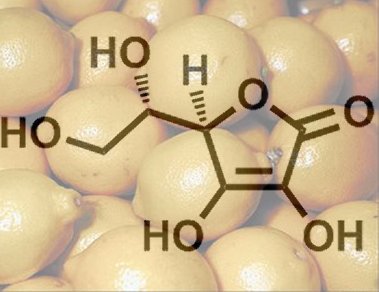The history of the first attempts at curing scurvy – up to isolation of the anti-scurvy factor from the adrenal glands of cattle, and subsequent structural analysis, laboratory synthesis, and industrial preparation – is a result of the achievements of many people, some of whom are introduced below.
Details on the long sequence of small advantages and missed opportunities to discover the importance of vitamin C can be found in the article Vitamin C Deficiency.
Recognizing Scorbut
Jacques Cartier (1491–1557) was the founder of the French colonial empire in Canada. He was surprised by an outbreak of scurvy, with which he was not familiar, when forced with his three ships to spend the winter of 1535/1536 on the St. Lawrence River. During that time virtually all his seamen became seriously ill. However, local Indians supplied him with an herbal remedy, Thuja occidentalis (now known as arbor vitae), which proved immediately effective (see Plants with Anti-Scurvy Activity). Unfortunately, this important knowledge rapidly passed into oblivion.
James Lind (1716–1794) conducted the first controlled medical study on 12 seamen suffering from scurvy, and in this way was able to show unambiguously the curative powers of fresh citrus fruits. Again, his results were unfortunately ignored by the British admiralty.
Sir Gilbert Blane (1749–1834), while serving as a ship’s doctor, analyzed the illnesses of the seamen during a long voyage in the Indian Ocean. He had the same ideas as Lind, and after being appointed personal physician to the Prince of Wales found himself in a position to insist upon  daily rations of citrus fruit juice on all British naval vessels.
daily rations of citrus fruit juice on all British naval vessels.
James Cook (1728–1779) introduced sauerkraut as a basic part of the diet aboard his ships. The sailors were not at all enthusiastic about the idea, so in the first week the sauerkraut ration was given exclusively to Cook and his officers. Only then was it given to the crew, “because”, as he wrote on the 13th of April 1773, “this is the mentality of seamen in general: everything displeases them, … irrespective of how much in their best interest it may be, and one hears from them only surly responses …; but the moment they recognize that their superiors set great store by something, that becomes the most delicious thing on earth”.
Isolation of Vitamin C
Axel Holst (1860–1931) discovered, together with Theodor Frölich, that guinea pigs, in the absence of a balanced diet, could also contract scurvy. These laboratory animals made it possible to evaluate raw and prepared foods for anti-scurvy properties, and based on that, to isolate vitamin C.
Albert Szent-Györgyi (1893–1986) was the first to isolate ascorbic acid from the adrenal glands of cattle, and he was later able to prove that it was identical to vitamin C. He was awarded the Nobel Prize for Physiology or Medicine in 1937 “for his discoveries in connection with the biological combustion processes, with special reference to vitamin C and the catalysis of fumaric acid”. He was not only honored for the isolation of vitamin C, but also for his studies of the metabolism of fumaric acid, where the latter was a basis for Hans Krebs’ discovery of the citric acid cycle [1].
Structure Determination of Vitamin C
Sir Walter Norman Haworth (1883–1950) published numerous fundamental papers on sugar chemistry, but above all succeeded in determining the structure and accomplishing the first synthesis of vitamin C. Haworth was awarded the 1937 Nobel Prize in Chemistry “for his investigations on carbohydrates and vitamin C”.
1933
Synthesis of Vitamin C
Tadeus Reichstein (1897–1996) developed a particularly efficient synthesis of ascorbic acid, the strategy of which remains the approach for the manufacture of the compound (Reichstein process).
Moreover, Reichstein was the first to isolate cortisone, and to demonstrate its tremendous therapeutic impact, for example, in the treatment of rheumatoid arthritis. He was awarded the Nobel Prize for Physiology or Medicine in 1950.
Intake of Vitamin C
Linus Pauling (1901–1994) is regarded by many as having been the most significant chemist of the 20th century. Apart from his groundbreaking theory of chemical bonding, he also clarified the α-helical structural motifs in proteins, for which he was awarded the 1954 Nobel Prize for Chemistry. Pauling’s relentless campaign for nuclear disarmament led him to also being awarded the Nobel Peace Prize in 1962.
In his later years he was a propagandist for the intake of large quantities of vitamin C as therapy against the common cold and other diseases, including cancer. These later activities were and still are regarded very critically, being the subject of much controversial discussion.
Reference
[1] K. Roth, Chem. Unserer Zeit 2008, 42, 346. DOI: 10.1002/ciuz.200800471
This is a part of the article:
- Vitamin C Deficiency,
Klaus Roth, Sabine Streller,
ChemViews Mag. 2014.
DOI: 10.1002/chemv.201300134




